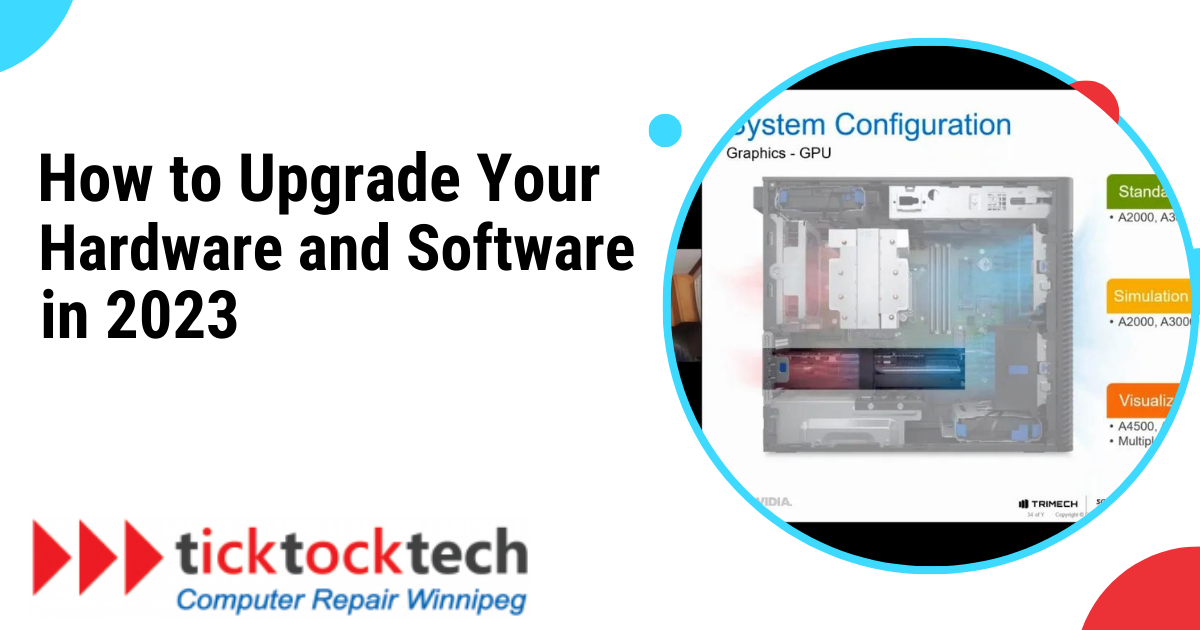Keeping your hardware and software up to date is essential for maintaining a smooth and efficient computing experience. Over time, hardware can become outdated and software can become bloated, leading to performance problems and security vulnerabilities. Upgrading your hardware and software will give your devices a new lease on life, improve their performance, and make them more secure.
In this blog post, we will discuss the benefits of upgrading your hardware and software, as well as the steps involved in doing so.
The Importance of Upgrading Your Hardware and Software
Upgrading your hardware and software is not merely a matter of staying in sync with the latest tech trends; it’s a fundamental strategy to ensure that your devices and digital tools continue to serve you optimally.
Here, we’ll delve deeper into the multifaceted importance of upgrading, exploring the various aspects that make it a vital practice for both personal and professional use.
1. Improved Performance
Upgrading your hardware and software can breathe new life into your devices. You’ll experience faster performance, smoother operation, and the ability to run the latest applications.
2. Enhanced Security
Older software versions can be vulnerable to security threats. By upgrading, you ensure that your system remains protected against the latest cyber threats and vulnerabilities.
3. Compatibility
Newer software and hardware are often more compatible with the latest apps, games, and peripherals. Upgrading ensures you won’t miss out on new features and functionality.
4. Longevity
Upgrading can extend the life of your devices. Rather than replacing them entirely, you can save money by making them more efficient and capable.
How to Upgrade Your Hardware
Let’s begin with upgrading your hardware, which can significantly impact your device’s performance and capabilities.
Upgrading Your PC
If you have a desktop or laptop computer, there are several hardware components you can consider upgrading:
- Adding More RAM: Increasing your computer’s RAM can lead to noticeable performance improvements, especially if you frequently use resource-intensive applications.
- Upgrading the Storage Drive: Swapping out your traditional hard drive for a solid-state drive (SSD) can make your computer significantly faster.
- Replacing or Upgrading the Graphics Card: Gamers and graphics professionals can benefit from a more powerful GPU (Graphics Processing Unit).
Upgrading Your Mobile Device
Upgrading your smartphone or tablet often involves:
- Getting a New Battery: If your device’s battery life has significantly declined, replacing it can restore your device’s usability.
- Upgrading to the Latest Model: In some cases, the best way to upgrade your mobile device is to purchase a new one with the latest features and improved performance.
How to Upgrade Your Software
Now, let’s explore how to upgrade your software, which is equally important for security and functionality.
Operating System Updates
Keeping your operating system up to date is critical. Updates often include security patches, bug fixes, and new features. Here’s how to upgrade your OS:
- For Windows: Go to “Settings” > “Update & Security” > “Windows Update.”
- For macOS: Go to the Apple menu > “System Preferences” > “Software Update.”
Application Updates
Regularly updating your applications is essential for security and performance. Most applications provide options for automatic updates, but you can also manually check for updates within the app or through the app store on your device.
Software Upgrades
Sometimes, upgrading your software involves transitioning to a new version or switching to alternative software:
- Operating Systems: If you’re running an older OS, consider upgrading to the latest version. For example, upgrading from Windows 7 to Windows 11 or from macOS High Sierra to macOS Monterey.
- Productivity Software: Upgrade to the latest version of software like Microsoft Office or Adobe Creative Cloud to access new features and improved compatibility.
Frequently Asked Questions on Upgrading Your Hardware and Software
You’ll know it’s time to upgrade your PC when it becomes noticeably slow, struggles to run new software, or lacks the necessary hardware to meet your needs.
Upgrading your smartphone is worth it when your current device no longer meets your performance or feature requirements. Consider the improvements in camera technology, processing power, and battery life in newer models.
Updating your operating system should be done regularly, typically when new updates are released. Most operating systems offer options for automatic updates to keep your device secure and up-to-date.
Not upgrading your software can lead to security vulnerabilities, decreased performance, and compatibility issues with newer applications and services.
Conclusion: How to Upgrade Your Hardware and Software
Ensuring your hardware and software are up to date is crucial for an optimal computing experience. It improves performance, security, and compatibility.
In Winnipeg, TickTockTech offers expert computer repair services to keep your devices running smoothly. For additional repair help or guidance, contact our tech support at (204) 818-2271.

